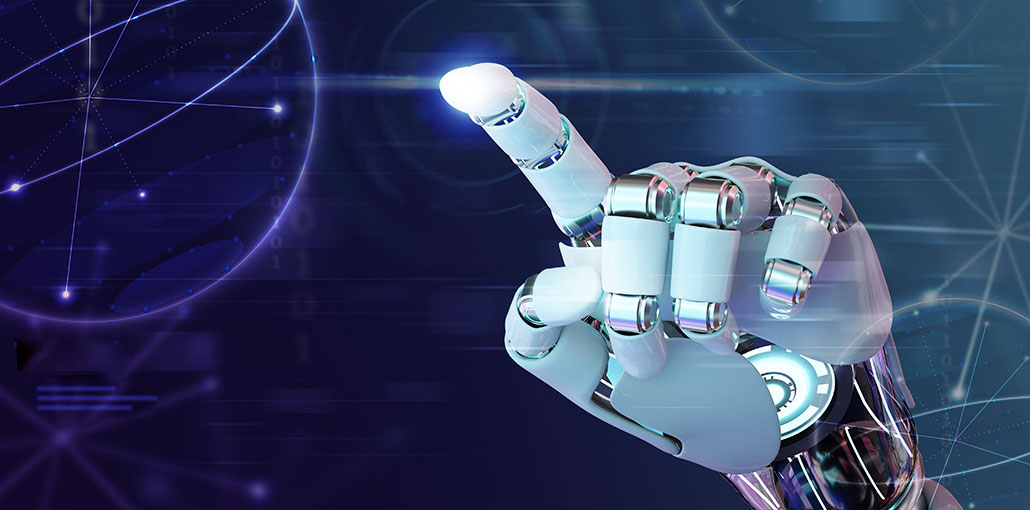You’ve probably used AI if you searched the term “artificial Intelligence” on Google. AI is something you have used if you have ever taken an Uber, or had your phone automatically correct a misspelled word. Artificial intelligence has a profound impact on almost all aspects of our lives, even though it might not be obvious. We will look at eight examples of Artificial Intelligence that can save time, money, energy, and effort in our daily lives.
What is Artificial Intelligence?
It is important to understand what artificial intelligence is before we can assess its impact on our lives. According to the Oxford Dictionary, artificial intelligence is:
Artificial intelligence, or statistical analysis, is a method that allows a computer to analyze data and make inferences. This is an automated process. Artificially intelligent machines are able to recognize patterns of behavior and adapt their responses accordingly. A more detailed definition can be found in our article ” What Is Artificial Intelligence (AI),”.
Machine learning (ML), deep learning (DL), and natural language processing are the most important components of AI.
Machine Learning refers to the process where machines learn how to respond better based on structured big data and continuous feedback from humans and algorithms.
Deep Learning is often considered to be an advanced form of Machine Learning. It learns through representations, but data doesn’t need to be structured.
Natural Language Processing is a tool for computer science. It allows machines to interpret and read human language. NLP allows computers to convert human language into computer inputs.
Also read: What Are The 10 Most Demanding Artificial Intelligence Technologies In 2021
8 Examples of Artificial Intelligence
Here is a list of 8 examples of artificial intelligence that you’re likely to come across every day in the life.
1. Maps and Navigation
AI has greatly improved travel. You no longer need to rely on printed directions or maps. Instead, you can use Waze, Google, or Apple Maps on your smartphone and enter your destination.
How does the application know where it should go? What’s more, it can determine the best route, traffic jams and road obstacles. Previously, satellite-based GPS was all that was available. However, users can now access artificial intelligence.
Machine learning allows the algorithm to remember the sides and numbers of the buildings it has visited. This makes the maps more accurate and helps with the recognition and understanding of building numbers and houses. It has been trained to recognize changes in traffic flow and recommend routes that avoid congestion and roadblocks.
2. Facial Detection and Recognition
Artificial intelligence has become a regular part of our daily lives. Face ID is used to unlock phones and allows virtual filters to be applied to faces while we take photos. Face recognition can also be used to secure airports and government buildings.
3. Text Editors or Autocorrect
AI algorithms use deep learning, machine learning, natural language processing, and machine learning to spot incorrect language usage and suggest corrections in texting apps and word processors. Computer scientists and linguists collaborate to teach computers grammar, just like you were taught in school. The editors will notice if you are using the wrong comma.
4. Search and Recommendation Algorithms
Have you ever noticed that when you shop online or watch a movie, the recommendations you get are often in line with your recent searches or interests? Smart recommendation systems learn your online behavior and preferences over time. Data is collected from the user at the front end and stored. The data can then be analyzed using machine learning and deep learning. The data is used to predict your preferences and provide recommendations for what you might like to listen to or buy next.
5. Chatbots
Customer service interactions can be stressful and time-consuming for customers. It’s a time-consuming and stressful task for customers. Companies find it inefficient, expensive, and difficult to manage. Artificially intelligent chatbots are becoming more popular. These algorithms enable machines to track orders, answer frequently asked questions and make direct calls.
Natural language processing (NLP) is used to teach chatbots how to mimic customer service representatives’ conversational styles. Advanced chatbots don’t require specific inputs (e.g. yes/no questions). Complex questions that require detailed answers can be answered by them. If you give the bot a negative rating for the answer it gave, it will correct the error and make it right the next time. This ensures maximum customer satisfaction.
Also read: 6 Types of Chatbots: Which is Right for Your Business?
6. Digital Assistants
Sometimes, when we are overwhelmed we resort to digital assistants to help us. Your help while driving may be able to call your mom. An AI virtual assistant such as Siri can access your contacts and identify “Mom” before calling the number. These assistants use NLP and ML, statistical analysis, and algorithmic execution to determine what you want and attempt to get it. Voice and Image Search work the same way.
7. Social Media
Social media apps use AI to support content monitoring, suggest connections, and serve ads to targeted users.
Through keyword recognition and visual image recognition, AI algorithms are able to quickly identify and remove problematic posts. Deep learning’s neural network architecture is an important part of this process. But it doesn’t end there.
Social media companies understand that their users are their products and use AI to connect them to advertisers and marketers who have identified their profiles. Social media AI can also be used to identify the type of content that users like and suggest similar content.
8. E-Payments
It’s a waste to visit the bank for each transaction. AI is one reason why you haven’t been to a branch for five years. Artificial intelligence is being used by banks to streamline payment processes and help customers.
Intelligent algorithms allow you to deposit, transfer, or open accounts from anywhere in the world. AI security, identity management, and privacy controls are responsible for this.
Even credit card spending patterns can be used to detect fraud. This is another example of artificial intelligence. These algorithms determine which products User X buys, where they are located, and what their price range is.
Final Takeaway
These examples of artificial intelligence provide entertainment as well as many utility services that we use frequently. This technology is still in development and many new innovations are yet to be made.










Leave a comment